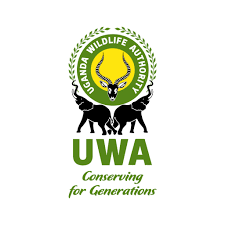Lake Victoria: Africa’s Great Inland Sea and Uganda’s Lifeline
Lake Victoria is more than just a body of water; it is a living force that defines East Africa. As the largest freshwater lake on the continent and the second largest in the world, Lake Victoria stretches across 68,800 square kilometers, touching the shores of Uganda, Kenya, and Tanzania. In Uganda, it is both a geographical landmark and a cultural heartland, shaping the lives of millions of people, sustaining diverse ecosystems, and anchoring the historical significance of the River Nile, whose journey begins here in Jinja.
Standing on the shores of Lake Victoria, it is easy to understand why it has been described as Africa’s inland sea. Its vast expanse disappears into the horizon, creating a sense of endlessness and mystery. The lake is dotted with hundreds of islands, from the bustling Ssese Archipelago with its sandy beaches and palm-fringed shores to smaller fishing communities where dugout canoes glide across the water in age-old rhythms. These islands offer unique retreats, blending tranquility with cultural immersion, and are among Uganda’s most overlooked gems for travelers seeking more than just safaris.
Lake Victoria is not only a cultural centerpiece but also a vital ecological system. Its waters are home to over 500 species of fish, including the famous Nile perch and tilapia, which feed millions across the region. Along its papyrus-fringed wetlands, birdlife flourishes—African fish eagles, kingfishers, herons, and cormorants are among the many species that thrive here. For birdwatchers, the lake is a paradise, where the air is alive with calls and the waters ripple with movement. Its role as a freshwater reservoir also makes it one of the most crucial natural resources in Africa.
The lake’s connection to the River Nile adds to its historical and geographical importance. At Jinja, Uganda’s adventure capital, the waters of Victoria spill out to form the source of the world’s longest river. This site is celebrated as both a natural wonder and a cultural landmark, attracting visitors who come to see where the Nile begins its 6,650-kilometer journey north to the Mediterranean. Around Jinja, the lake transforms into a hub of activity, offering boat cruises, kayaking, fishing trips, and even the thrill of white-water rafting downstream along the Nile.
For communities living along its shores, Lake Victoria is a lifeline. Fishing remains a cornerstone of local livelihoods, with bustling markets showcasing the daily catch. Canoes and ferries are not only tools of trade but symbols of connection, binding together islands, villages, and towns. Despite modern pressures such as overfishing and pollution, the lake remains a resilient and enduring presence, reflecting both the challenges and the potential of East Africa’s natural wealth.
Travelers drawn to Lake Victoria often speak of its calm beauty and cultural richness. Whether it is relaxing on the Ssese Islands, exploring the birdlife of Mabamba Swamp, visiting Jinja for adventure, or simply watching fishermen cast nets under a crimson sunset, the lake offers moments of serenity and discovery. It is not just a stop on the safari circuit but an experience in its own right—a destination where water, wildlife, and people come together in harmony.
Lake Victoria is the beating heart of East Africa. It is a place where geography, culture, and history converge, a reminder that Africa’s great journeys begin and end with its waters. For Uganda, it is not only a natural wonder but also a source of pride, sustenance, and endless stories that continue to shape the life of the nation.




